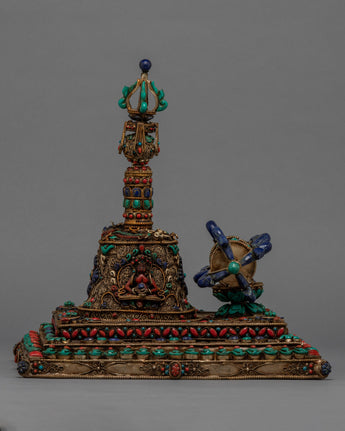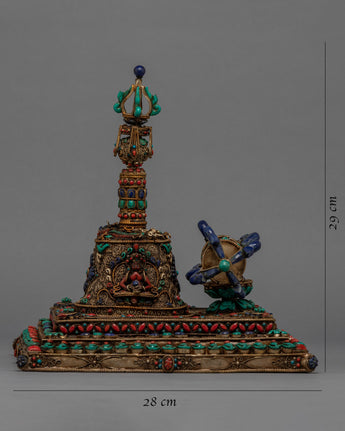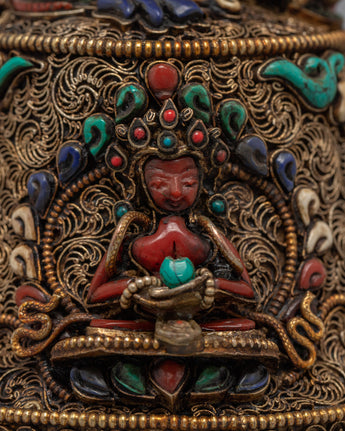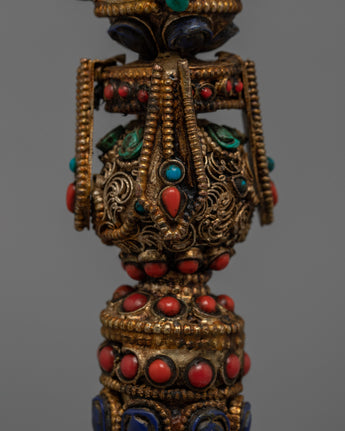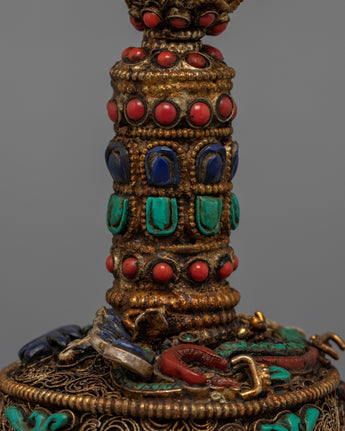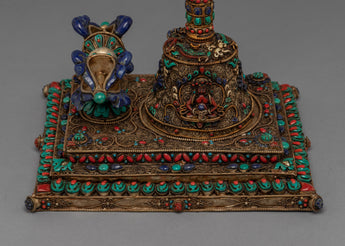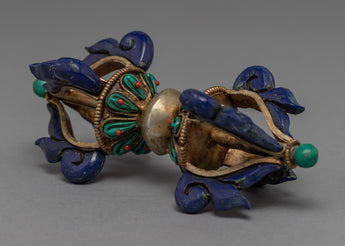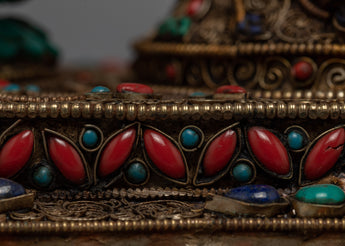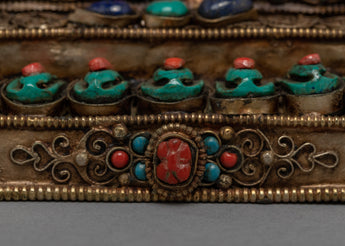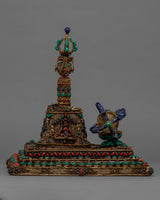
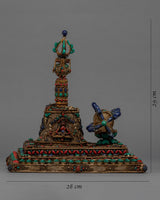
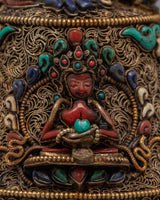
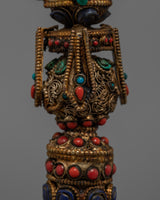
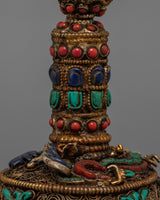
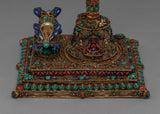
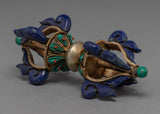
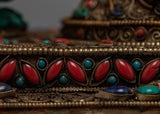
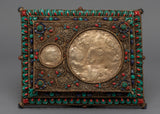
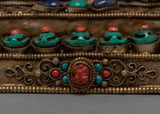
Buddhist Bell and Vajra | 24K Gold Plated

100% AUTHENTIC

HANDMADE

FREE SHIPPING
Buddhist Bell and Vajra
About Vajra & Bell
The Vajra and Bell are sacred objects in Tibetan Buddhism that are used for a variety of purposes, such as prayer, meditation, and ritual ceremonies. This set is handcrafted with a copper body and gold plating, giving it a lovely and elegant appearance. The gemstones are embedded in the objects of the Vajra and Bell, adding to the set's beauty and spiritual significance. The Vajra and Bell are displayed on a stand, allowing them to be kept respectfully and dignifiedly.
Introduction to Vajra & Bell
The vajra means "diamond" or "lightning" in Sanskrit, is an important symbol and ritual instrument in Hinduism and more in the Buddhist tradition Vajrayana ("diamond way") to which it gave its name.
Tibetan Dorje represents the indestructibility and efficiency that overcomes all obstacles. Symbolically, Dorje Vajra destroys ignorance. In Tibetan Buddhist rituals, the vajra is often used with the bell, representing the masculine and the feminine, the ying and the yang, the effective action, and the compassion. The shape of the Tibetan Dorje is symmetrical, the two pyramidal heads representing samsara and Nirvana, which cancel each other out in its center thanks to the ring of Emptiness. Having a Dorje at home would have positive virtues against the various attacks we suffer.
The bell or drills is the feminine aspect of the perfection of wisdom, which directly realizes emptiness.
The Vajra or Dorje represents the male aspect as a method or skillful means, the indestructible nature of the absolute. Together they symbolize the blessing mandala of a practitioner’s main yidam deity.
------------------------------------------------------------
Size With the Stand: 29 cm(Height) x 28 cm(Base)
Total Weight: 2.28 kg
------------------------------------------------------------
How to set up your own Buddhist Shrine?
-Find a clean, quiet, and uncluttered spot.
-Set up an altar table, and cover it with an altar cloth that calls to you.
-Place your sacred item (statue, thangka, or a picture of Buddha) at the center.


